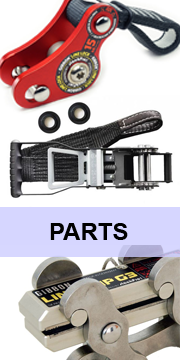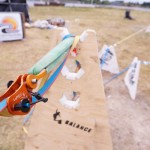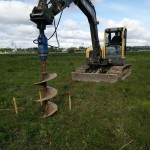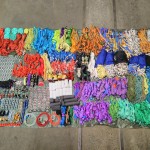How to, No trees, Outdoor, Parks, Slackline Events, Slackline Knowledge
Biggest Slacklinepark with Longlining A-frames and concrete ground anchorat Move Festival in Copenhagen Danemark
Hey slackline folks! This blog post is shared from a Slackline group on facebook called slackchat, I wanted to share the exact post, because I was just stoked about how great the guys from the Move Festival in Copenhagen, Danmark realized such huge slackline park without one tree! There are even Longline A-Frames and a multiple concrete ground anchor a several wooden a frames! Anyone who thought setting up one slackline without having two trees, should read this to see what really is possible! Enjoy:
I wanted to share my adventures with creating the world’s largest and most diverse removable slackline park from scratch—a slackline park without any trees.
Move Copenhagen, a festival which seamlessly combines slackline, yoga, acroyoga, climbing, dance, parkour, and more into a single, incredible experience, has always had the problem that the location has no reasonable options for rigging slacklines. The areas that do have trees are either significantly out-of-the-way, or dangerous and under-sized for the number of participants.
To overcome this problem in previous years, we’ve rigged off of large (1.8 ton) cement “legos” (see this link for an idea of what they look like:https://www.facebook.com/groups/slackchat/permalink/541970979210117/) which we moved into a pattern which maximizes the number of slacklines while minimizing the number of blocks. Moving the blocks has always been very difficult. For the first year, we did it ourselves with a forklift that we were able to borrow. This took about two weeks of work, and was mostly accomplished by the incredible M. E. Christensen. The second year, we hired a crane truck to lift the blocks into place. This also proved to be very difficult, time-consuming, and most of all, costly.
This year, we were able to get approval for a permanent anchoring system in the field, provided that the permanent fixtures were at a minimum depth of 20 cm below ground level, and the anchor holes would be back filled with dirt at the end of the festival. This was great news, as a permanent “deadman” anchoring system, used in conjunction with A-frames, would allow us to save all the labor and costs of placing the cement blocks, and make Move Copenhagen festival easier and more financially sustainable for the long-term.
In an effort to minimize construction costs, and maximize effectiveness of the anchors that were placed, the deadman anchors were designed to be “multi-directional”. This means that a single deadman anchor can have up to six attachments. This six-point attachment system gave us an even more efficient use of the area (as opposed to the four-point system used with the rectangular cement lego blocks), and allowed for a greater variability with the lines that could be rigged in future years.
The multi-directional deadman anchors gave rise to an issue, though, of counter-loading of the attachment point. If, for example, we were to have used the classic “log” style deadman, the chain that would be the main attachment point would then be shared by six lines, all of which pull in separate directions from each other in 60° increments. It’s easy to visualize the unpleasant interactions that six different slacklines would make on each other, as transmitted through the non-static chain anchor.
Instead, we decided on digging a hole and filling it with reinforcing steel mesh and concrete, and then setting eyebolt anchors in the wet cement. The eyebolts are an assembly created with rated eyebolts, threaded rod, nuts, coupling nuts, and washers. This assembly allows for high-strength, variable angle rigging, and was the least labor-intensive, lowest cost solution that we had at the time.
The holes that we originally were planning on digging were 1 meter deep and 60 cm wide, which gave us a cavity capable of receiving approximately 550 kg of concrete (~0.25 m^3). Unfortunately, the ground that we were digging in was unexpectedly full of stones (landfill from years of construction in Copenhagen), and the hard, stony soil broke our earth bore twice.
With about half of the holes finished, we decided to switch to using the excavator bucket to create a rectangular hole 100 cm long, 80 cm wide, and 45 cm deep. This new shape allowed us to keep digging the remainder of our holes (renting excavators is EXPENSIVE), while compensating for the poor quality of the soil.
Once the holes were made and the reinforcing mesh was placed, a cement truck came and filled the holes with concrete (7.5 cubic meters in total). The eyebolt anchor assemblies were set into the wet cement in a pattern which allowed for each slackline anchor to share an eyebolt with one other slackline (at a 60° separation angle between each slackline).
The anchor holes were now set in a pattern which, when fully rigged, allowed for 25 ten-meter slacklines, 6 twenty-meter, 4 thirty-meter, one 26-meter, a great multitude of combinations of slacklines otherwise, and a 50, 70, 100, and 130-meter longline. Now we just needed enough A-frames for the lines.
We already had a good set of longline A-frames that we built for the previous Move festivals, and now we needed a cheap and efficient method for creating almost 70 lowline A-frames. We decided to cut an A-frame jig out of plywood, which gave us a number of benefits. The plywood A-frames, cut from 21 mm laminate, were strong, simple, easy to cut, easy/low-volume to store, and even allowed us to stencil the Move logo onto them.
We created two different sizes of A-frames from the plywood: 56 cm and 110 cm. The 56 cm A-frames worked phenomenally well, while the taller A-frames were more susceptible to damage from being improperly loaded.
Finally, after having all of the holes dug and the A-frames cut, the task of rigging the lines came around. Unfortunately, I didn’t plan the rigging instructions well enough (I should have printed out clear instructions with pictures), and nearly every line was rigged to the wrong eyebolt, which created cross-loading, tangling, and generally messy rigging. A. J. B. Thomson and M. Kenny offered to take over some aspects of field rigging and organization for next year (thanks, guys!), so hopefully we can develop a better plan for our volunteer riggers.
Other than our lowline field being a great success, the longline system worked out just as well as in previous years. The longline A-frames from the previous years, along with the ones loaned to us by K. K. Kristensen, allowed us to set up the 50, 70, and 100 meter longlines. Unfortunately, our taller A-frames for the 130 meter lines got left behind last year, so we’ll have to create a new set for Move 2016.
The slackline field for this festival has always been a great undertaking, and this year took the cake. Thankfully, though, Move Copenhagen has a great wealth of dedicated volunteers, and their contributions have made this festival possible.
The slackline field for Move Copenhagen is now, finally, a sustainable system, and is capable of accommodating 160 slackliners per 1.5 hour period at peak capacity. The field has variability for slacklines from 10 to 130 meters in length, and is fully functional for tricklines as well.
Thank you for reading! Please let me know what you think, and let me know if you have any questions. This post was the extremely condensed version of the process of managing this project, and left out the vast majority of the actual steps taken to achieve the end goal. We faced a great many difficulties in achieving our goal, but we’re grateful for the Move community which supports our efforts.
I would like to give a special thanks to all the volunteers, coordinators, and organizers who made this possible. Thanks to Urban Ranger Camp, slackline.dk, Landcruising, S. Iverson, S. R. Andersen, J. Skovgaard, and, most of all, A. T.-Brock for making this festival happen. This has been the most rewarding experience of my life.
Here is also a link to the festivals Slackline Workshop programm: http://movecopenhagen.com/slackline-workshops
By the way the festival was on the end of June 2015, but stay tuned for the 2016 version, maybe you will be around!
Thanks again from Slacklineshop NZ and Slackline Shop AU for reading and once again Thumbs up for the danish team who accomblished this huge effort and come out of the event!!!

















